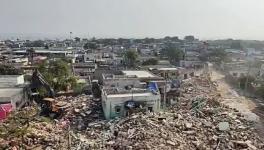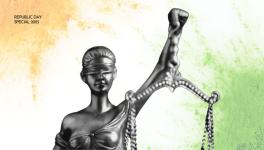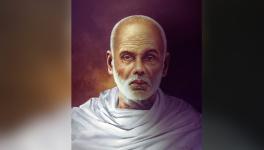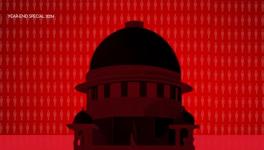SC Allows Temple Construction In Disputed Land; Alternate Plot Of 5 Acres For Mosque
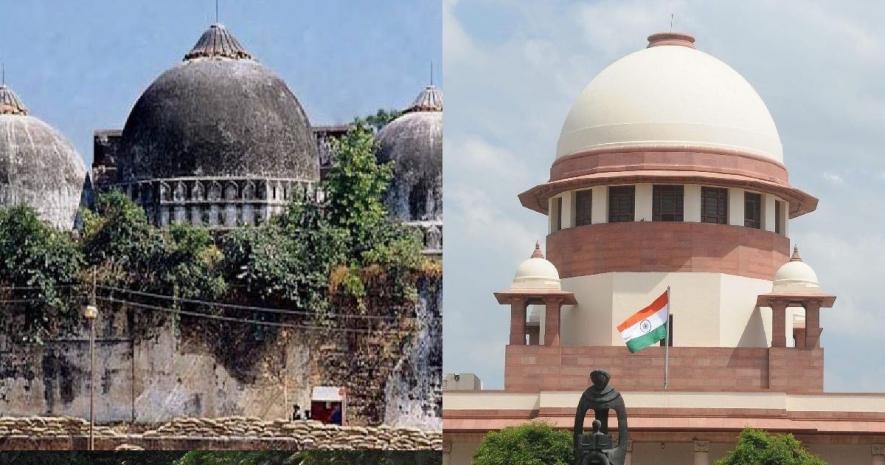
Image Courtesy: Scroll.in
In a unanimous verdict, the Supreme Court on Saturday held that the entire disputed land of 2.77 acres in Ayodhya must be handed over for the construction of Ram Mandir.
At the same time, the Court held that an alternate plot of 5 acres must be allotted to the Sunni Waqf Board for constructed at the same time, the Court held that an alternate plot of 5 acres must be allotted to the Sunni Waqf Board for construction of mosque. This direction was passed invoking powers under Article 142 of the Constitution. The Court observed that the destruction of Babri mosque in 1992 was a violation of law. The act of placing idols beneath the central dome of the mosque in 1949 was an act of "desecration", observed the Court.
The Central Government has been directed to formulate a scheme for construction of temple within three months. A Board of Trustees must be set up for temple construction. Appropriate representation must be given for Nirmohi Akhara in the trust.
However, the Court clarified that the rights of Ram Lalla to the disputed property is subject to maintenance of law and order and communal harmony.
Thus the Court decreed the suit filed on behalf of the deity Ram Lalla, and partly decreed the suit filed by Sunni Waqf Board.
The verdict was read out by CJI Gogoi, over half an hour.
The key points from verdict.
- The Court held that the suit by Nirmohi Akhara was time barred.
- The findings of ASI report cannot be brushed aside as conjecture.
- ASI reports show that the Babri Masjid was not built on a vacant land. The underlying structure was not of Islamic origin.
- The ASI report was not conclusive as to whether the underlying structure was a Hindu temple.
- The mere existence of structure beneath the mosque cannot lead to a title for Hindus now, even if that structure is found to be of Hindu origin.
- The faith of Hindus that the place is birth place of Lord Ram is undisputed.
- The Ram Janmabhoomi has no juristic personality. But Ram Lalla, the deity has juristic personality.
- The Suit by Sunni Waqf Board is maintainable and not barred by limitation.
- The Sunni Waqf Board has not been able to prove adverse possession. There is evidence to show that the Hindus had been visiting the premises prior to 1857
- There is clear evidence to show that Hindus worshiped in the outer courtyard of the disputed site. As regards the inner court yard, there is no evidence in the suit by Sunni Board to show exclusive possession prior to 1857.
- Allahabad HC was wrong in splitting the properties into three, giving each party one-third share. It was not a partition suit, observed the SC.
Background
The five judges bench of the Supreme Court had reserved judgment on October 16 in the case after a marathon hearing of forty days.
This is the second longest hearing in the history of Supreme Court after the landmark hearing in Keshavananda Bharati case which lasted 68 days.
Fourteen appeals have been filed in the apex court against the 2010 Allahabad High Court judgment, delivered in four civil suits, that the 2.77-acre land in Ayodhya be partitioned equally among three parties - the Sunni Waqf Board, the Nirmohi Akhara and Ram Lalla.
What The Allahabad HC Held In Ayodhya-Babri Masjid Dispute?
The day to day hearing commenced on August 6, after CJI declared that the mediation talks by the SC-appointed panel of Justice F M Khalifullah, Sri Sri Ravi Shankar and Senior Advocate Sriram Panchu failed.
The Hindu parties have contended that the entire 2.77 acres of land has juristic personality as the janmasthan of Lord Ram. The Muslim side has countered this by saying that the mere belief that the site was the birth place of Lord Ram will not confer it juristic personality.
The parties have referred to the reports of historians, travelers and gazetters and land documents prepared during British rule to base their respective claims. References were also made to the report of the Archaeological Survey of India on the point whether the mosque was built over an existing temple.
After the conclusion of the hearing, the parties were given liberty to file written submissions on moulding the relief.
The Akhil Bharat Hindu Mahasabha, in its written submission, has pressed for the need to provide for the governing and administration of the decreed property and sought the setting up of a body of persons or a trust to ensure that the purpose of the decree is carried out in letter and spirit. The Mahasabha has asked the Court to establish a trust so it can be determined "who will be entitled to and liable to raise construction over such land".
The Muslim parties had given their note in a a 'sealed cover'. The Hindu side has taken objection to the sealed cover note submitted by the Muslims.
Later the Muslim parties filed a statement urging the Supreme Court to mould the relief in the case in such a fashion to reflect the 'constitutional values that this great nation espouses'.
"The decision by this Hon'ble Court, whichever way it goes, will impact future generations. It will also have consequences for the polity of this country”, said the joint statement filed by seven Muslim parties in the case.
"Since the judgement of this Court will have far reaching implications, it is for the Court to consider the consequences of its historic judgement by moulding the relief in a fashion that will reflect the constitutional values that this great nation espouses. We hope that the Court, in moulding the relief, upholds our multi- religious and multicultural values in resolving the issues confronting it.
Moulding the relief is the responsibility of this Court, which itself is the sentinel of our Constitution.
When moulding the relief, this Court must also consider how future generations will view this verdict", the statement by Senior Advocate Rajeev Dhavan said.
On the last date of hearing, there were reports that the Chairman of the Sunni Waqf Board had agreed for settlement by giving up the claim for mosque in the case.
These reports were denied by the Muslim parties in the case by issuing a joint statement.
"We are taken aback by the media reports attributed by Mr Shahid Rizvi, Advocate on record that U.P. Sunni Central Waqf Board was willing to withdraw the claim on site of the Babri Masjid"(sic), the statement said.
The statement concluded by saying :
"Accordingly, we must make it absolutely clear that we the appellants before Supreme Court do not accept the proposal made which has been leaked out to the Press, nor the procedure by which the mediation has taken place nor the manner in which a withdrawal of the claim has been suggested as a compromise."
Fourteen appeals have been filed in the apex court against the 2010 Allahabad High Court judgment, delivered in four civil suits, that the 2.77-acre land in Ayodhya be partitioned equally among three parties - the Sunni Waqf Board, the Nirmohi Akhara and Ram Lalla.
Get the latest reports & analysis with people's perspective on Protests, movements & deep analytical videos, discussions of the current affairs in your Telegram app. Subscribe to NewsClick's Telegram channel & get Real-Time updates on stories, as they get published on our website.










